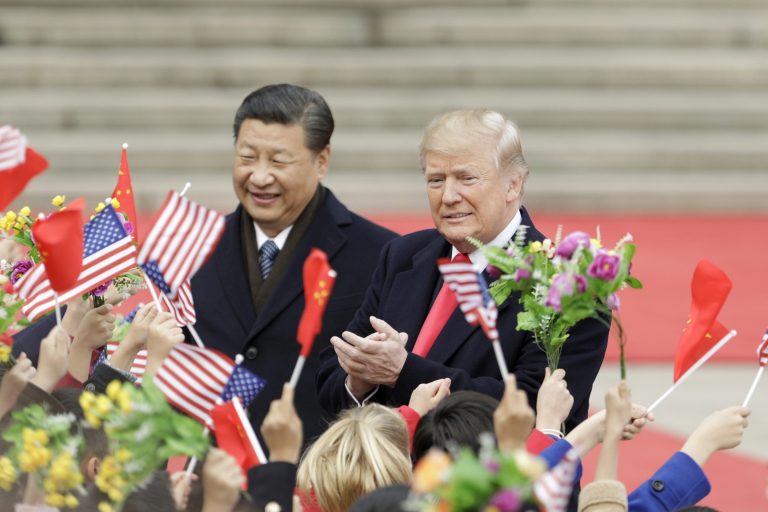Introduction: A Double Shock to Global Manufacturing
In a world already strained by geopolitical conflict and supply chain volatility, two powerful nations have triggered major tremors across global manufacturing. On one side, China has tightened its grip on rare earth exports, choking off access to critical materials used in everything from EVs to military systems. On the other, Donald Trump has unveiled a plan to curb ethane usage, delivering a potential blow to America’s own plastics and petrochemical industry.
This one-two punch—targeting rare earths and ethane, two pillars of modern industry—has global manufacturers, energy analysts, and environmental groups on high alert.
The Rare Earths Chessboard: China Plays Its Power Card
China controls over 70% of global rare earth mining and 85% of refining capacity, making it the dominant player in a sector critical to:
- Electric vehicle motors
- Smartphones
- Wind turbines
- Missile guidance systems
In a strategic move amid growing US-China tensions, Beijing recently announced new export restrictions on key rare earth elements, citing national security concerns. Experts view this as retaliation for Western tech curbs and military alliances in the Asia-Pacific.
What’s Restricted:
- Gallium and germanium (used in semiconductors and solar panels)
- Heavy rare earths like dysprosium and terbium (crucial for permanent magnets)
These restrictions are expected to send prices soaring and further destabilize global electronics and defense manufacturing.
The Trump Shock: Ethane Under Fire in Plastics Crackdown
While China clamps down on high-tech inputs, former President Donald Trump has introduced a policy proposal targeting the ethane supply chain, a key component in plastics production. Ethane, derived from natural gas, is a critical feedstock for ethylene, the foundation of plastic resins used in packaging, construction, textiles, and automotive parts.
Trump’s Proposed Measures Include:
- Limiting ethane exports to preserve domestic supply
- Stricter environmental regulations on ethane crackers
- Tax incentives for alternative, biodegradable polymers
Framed as an effort to promote “cleaner, modern American manufacturing,” critics argue that the move could severely disrupt the U.S. petrochemical industry, especially in ethane-rich states like Texas and Pennsylvania.
Plastics and Petrochemicals: A Global Domino Effect
Ethane policy changes in the U.S., combined with China’s rare earth export clampdown, could trigger a cascading supply chain crisis. Here’s how:
| Sector | China’s Rare Earth Restriction | Trump’s Ethane Policy |
|---|---|---|
| EV Production | Disrupted motor magnet supply | Plastic parts cost surge |
| Tech Manufacturing | Scarce semiconductors | Packaging shortages |
| Renewable Energy | Limited wind turbine parts | Infrastructure delays |
| Defense | Harder to build guided systems | Weapon casing shortages |
| Consumer Goods | Rare earths in batteries | Plastic alternatives costlier |
Multinational corporations are now scrambling to secure alternate supply lines, invest in rare earth recycling, and explore bio-based plastic substitutes.
A Tense Trade and Energy Policy Convergence
Both moves reflect a deeper geopolitical shift where economic and environmental policies intersect with trade and defense strategies.
- China is weaponizing rare earths much like it did during previous trade disputes.
- Trump’s proposal appears to blend energy nationalism with a protectionist manufacturing agenda.
- The result? A globally connected supply chain teetering on fragmentation.
These disruptions also highlight how resource dependency—whether for energy or materials—can become a tool of leverage in modern conflicts.
Environmental vs Economic Debate
Trump’s proposal has triggered intense debate:
Supporters say:
- It’s a push toward biodegradable plastic innovation
- Helps reduce plastic pollution and fossil fuel dependency
- Keeps US petrochemical jobs focused on domestic demand
Critics argue:
- It will undermine competitiveness of US petrochemical firms
- May increase costs for consumer goods and infrastructure
- Contradicts past policies supporting fracking and fossil fuels
Meanwhile, environmental groups see this as a rare bipartisan opening to accelerate the green chemistry revolution—but only if followed by investment in alternatives.
Global Reactions: Allies, Rivals, and Industry
- Europe is assessing impacts on electric car production and defense procurement.
- India and Australia may benefit by boosting their own rare earth mining sectors.
- Saudi Arabia and UAE, major plastic producers, are concerned about U.S. policy shifts.
- Big oil and petrochemical giants like ExxonMobil and Dow are lobbying fiercely against the ethane restrictions.
What’s Next?
The rare earth bottleneck and ethane policy battle are far from resolved. Over the next 12 months, expect to see:
- Spike in rare earth and plastic resin prices
- Mergers and investments in alternative supply chains
- Policy clashes in Washington over petrochemical strategy
- More tech companies reshoring or diversifying manufacturing
One thing is clear: the world is entering an era where geopolitics, raw materials, and energy policy are deeply intertwined, reshaping how we make, move, and manage modern products.
Conclusion: A Manufacturing Storm Is Brewing
As China restricts rare earth exports and Trump proposes limits on ethane, the global industrial economy is poised for a seismic shake-up. This is not just about trade or environment—it’s about who controls the future of innovation and infrastructure.
Will the world adapt through innovation and diversification? Or will it spiral into a deeper cycle of resource nationalism and supply chain chaos?
The next moves on this global chessboard will decide not only the cost of plastic and electric vehicles, but the very direction of industrial strategy in the 21 st century .




